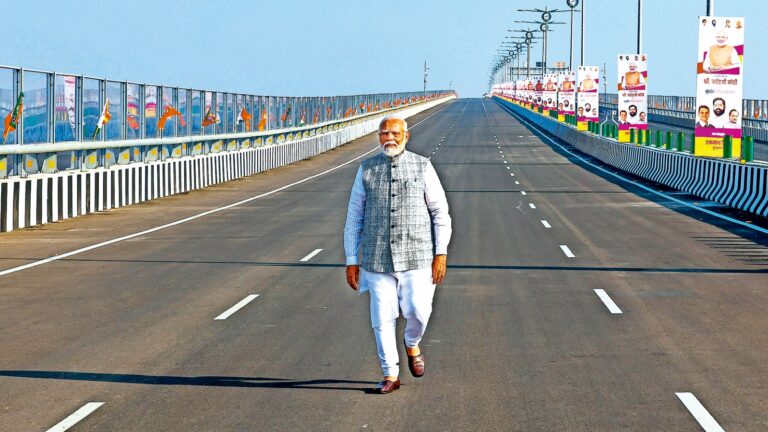It is a farce that while those who lost the election are in a celebratory mood, those who won are in somber mood. The Indian National Congress recorded its lowest number of seats ever in 2014, dropping to 44 seats from 206 in 2009, and could not recover from that crushing defeat in the 2019 general elections, winning only 99 seats this time despite much publicity. Its vote share remains low at 21%, while the BJP hovers around 36-37%. The Indian National Congress failed to open its account in 11 states, including important ones like Tamil Nadu, Andhra Pradesh, Madhya Pradesh, Delhi, Himachal Pradesh, Uttarakhand, Jammu & Kashmir, and Tripura. It managed to win only one seat in big states like Odisha, Gujarat, Chhattisgarh, and West Bengal. The BJP also failed to win any seats in seven states, but only Tamil Nadu and Punjab mattered.
This statistical reality indicates that the public has given the Congress-led coalition the mandate to function as a responsible opposition. And yet, the Congress leadership seems to believe that mandate lies with them, not the NDA. Congress leader Mallikarjun Kharge predicted that “Modi’s minority government” “could fall at any moment,” while Rahul Gandhi cited issues such as “a tectonic shift in Indian politics” and “Modi’s ideals and image are destroyed,” concluding that the NDA government is “highly fragile” and could collapse with “the slightest disturbance.”
The Congress leadership is under two illusions: first, that the mandate is on them and not on Mr Modi, and second, that the NDA alliance will soon collapse because Prime Minister Narendra Modi is temperamentally incapable of running a coalition government.
Modi’s real challenge is not running this coalition. With 240 seats, the BJP is in a much better position to run a coalition government than the patchwork INDI coalition government. The BJP leads coalition governments in several states, including Maharashtra and Assam. Moreover, with over three decades of political experience, Modi is hardly a novice in coalition politics.
The challenge for Modi will not come from running a coalition government, but from the opposition parties who sit in parliament thinking the ruling party does not have the mandate to govern. Modi has lamented the lack of a “good opposition” and said he will have to prepare for a fierce opposition offensive this term.

The new government will need to focus its attention on certain priority areas in addition to weathering the rough waters of parliament. With over 20 million youth reaching the working age of 18 every year, a burgeoning youth population will be a challenge for any government. Over the past decade, the government has taken several initiatives to address this issue, primarily encouraging self-employment. However, providing formal employment opportunities to millions of skilled and semi-skilled youth is now a major challenge. Inflow of private investment in manufacturing is a key answer to this. There is a need to curb impediments that impede the smooth inflow of such investments. According to World Bank data, India’s ease of doing business ranking for 2021 has improved significantly. However, several systemic impediments remain.
We are in the era of Industry 4.0, Internet 3.0 and Genetics 2.0. Our education sector needs to gear up to face the new realities. While the opposition parties are right to raise controversy over competitive exams like NEET and NET, more attention needs to be paid to strengthening research and innovation. India continues to underperform in these areas. Most of what many claim to be innovation is imitation, where copying has become a substitute for creativity.

We also need more private capital in research, development and innovation. Unfortunately, our research and development funding, both public and private, amounts to less than 0.7% of our GDP, which is about $17 billion. China spends more than 2.5% of its GDP on research and development. China’s annual research and development expenditure is nearly $500 billion, about 30 times that of India. Meanwhile, the United States spends about $600 billion on research and development.
In 2022, India filed for around 60,000 patents, of which around 50% were filed for the domestic market. The quality of these patents was perceived to be very low. Meanwhile, China filed for 4 million patents in the same year, of which 25% were “high value patents”. Unlike China, India does not have such a scientific classification. The United States filed for around 700,000 patents in 2022. A recent study showed that due to the Modi government’s push, India’s research output will increase by around 54% between 2017 and 2022 to reach 1 million research papers, ranking fourth in the world. However, many of these papers are of questionable quality and relevance, with only 15% being cited in top academic journals, according to research platform SciVal. China continues to lead the world with 4.5 million research papers published in the five-year period, followed by the United States with 4.4 million and the United Kingdom with 1.4 million.
And the rapidly changing geopolitical environment may soon demand a major realignment of India’s strategic priorities. Strategic self-reliance is never easy. It will become even more challenging amid the strengthening position of the West and the Russia-China axis. It is no secret that Chinese influence in the region is our biggest challenge. The confrontation between the new China-Russia-Iran axis and a significantly weakened West will pose new challenges. A world dotted with multiple conflicts will be the new reality, calling for a deft foreign policy response.
Besides domestic and international challenges, a relentless offensive from an opposition party with no regard for conscience could pose a real test for Prime Minister Modi as he embarks on a record-breaking third term in office.
The author is the chairman of the India Foundation and is affiliated to the RSS.

